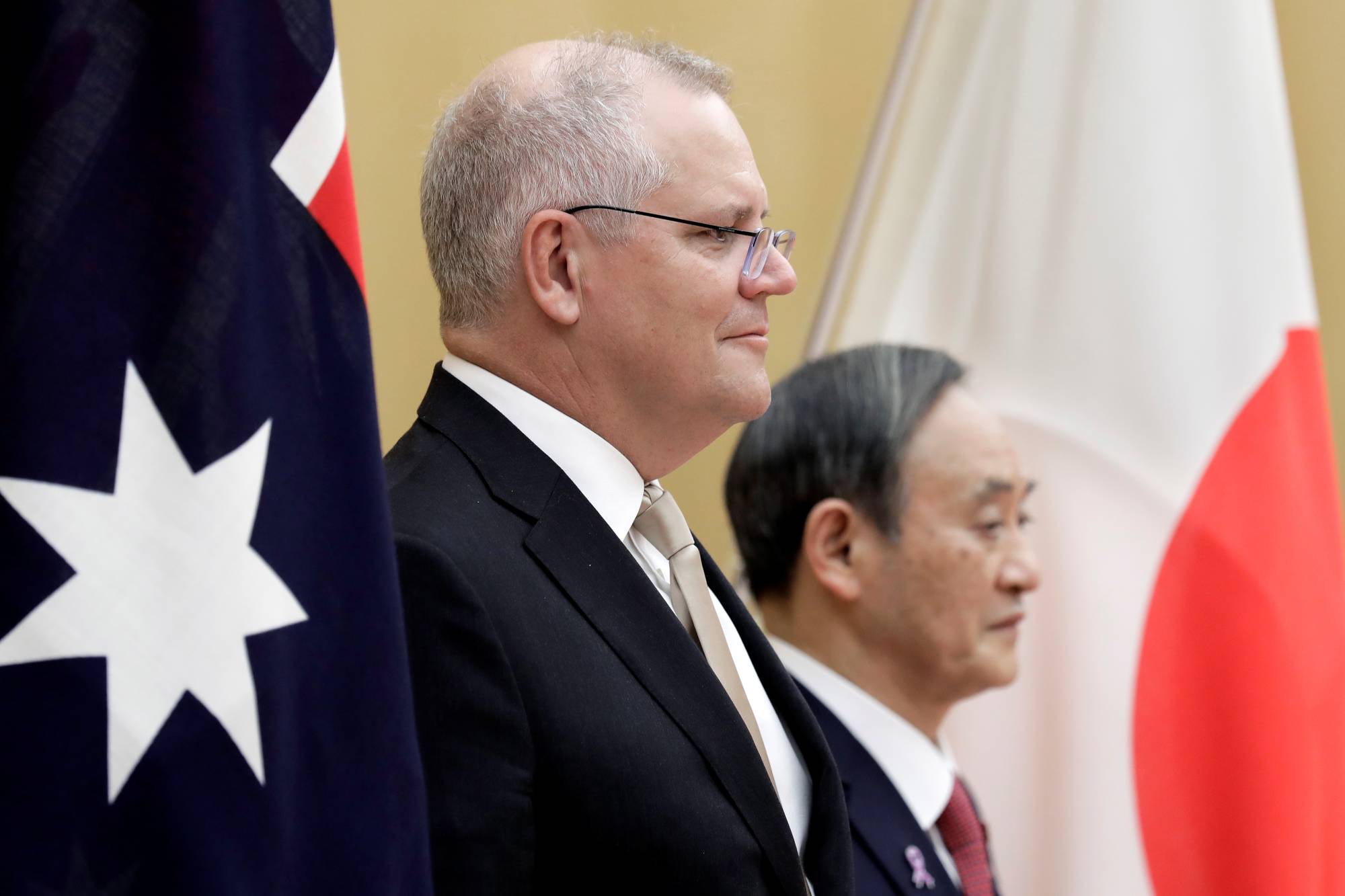In this virtual era, symbols have assumed greater significance. Last week’s visit to Japan by Australian Prime Minister Scott Morrison was very symbolic and therefore a very big deal. Morrison was the first foreign leader to visit the country since Yoshihide Suga became prime minister, a meeting that took on even more importance and signaled real purpose at a time of COVID-19, with all the associated risks and inconvenience. The interest is mutual: Morrison was the first foreign leader Suga called after succeeding Shinzo Abe as prime minister.
Chats and photos are the fluff of diplomacy, but the two men also put meat on the bones of the bilateral relationship by agreeing on a reciprocal access agreement, a legal framework that allows the two countries’ militaries to visit for training and joint military operations. It is only the second such arrangement that Tokyo has concluded with another government. The other is the Status of Forces Agreement signed in 1960 with the United States, Japan’s treaty ally.
The reciprocal access agreement is another milestone in the partnership that Tokyo and Canberra have been building, a project that has been underway for more than three decades. It is a remarkable development for a relationship once freighted with bitter memories from World War II. A secure and prosperous Indo-Pacific demands that Japan and Australia work together in a wide variety of endeavors, fashioning another pillar of the regional order.

















With your current subscription plan you can comment on stories. However, before writing your first comment, please create a display name in the Profile section of your subscriber account page.